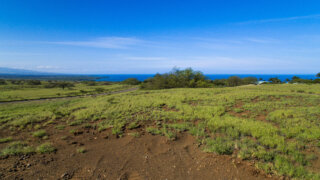In 1966, Holiday magazine writer Caskie Stinnett declared that “For a long time now I have stubbornly held to the view that anything Laurance Rockefeller can do, God can do as well. But my first glance from a plane window at Mauna Kea, the resort that Rockefeller created amid the lava rock and desert waste of Hawaii’s west coast, caused me a moment’s hesitation. If nothing else, one had certainly picked up where the other had left off.” Today, a half-century later, it’s almost impossible to argue with Stinnett’s observation.
where paradise
WAS PIONEERED
In the 1960s, visionary conservationist, art collector and venture capitalist Laurance Rockefeller set out to find the world’s finest beaches on which to build resorts. On Hawaii’s Big Island, still largely undiscovered at the time, he found a spectacular piece of land. There were two magnificent white sand beaches divided by a dramatic lava outcrop. Unlike most of the Kohala Coast, the land had character, rising quickly toward snow-capped Mauna Kea, the tallest peak in the islands. Rockefeller had a keen eye.
He engaged Robert Trent Jones Sr. to design a golf course and the architectural firm Owens, Skidmore, and Merrill to design Mauna Kea Beach Hotel to seamlessly blend into the bluff that overlooked the beach. Famed interior designer Davis Allen was brought in to assemble a 1,000-plus piece collection of Asian, Oceanic, and local craft art, among them, a pink granite Buddha from a 12th-century Indian temple at the top of a staircase that beckons you to explore the gardens beyond.
In 1994, new resort owners saw Rockefeller’s dream of a second hotel come to fruition with the opening of Hapuna Beach Hotel and its attendant golf course. Comfortably set in the bluffs, and with Mauna Kea, Mauna Loa and Kohala Mountains as a backdrop, it overlooks the beach that many consider the best in all of Hawaii.
Today, Rockefeller’s legacy is more vibrant than ever — a testament to the vision that created a place where timeless grace and luxury, like the tides and tradewinds, abide.

















